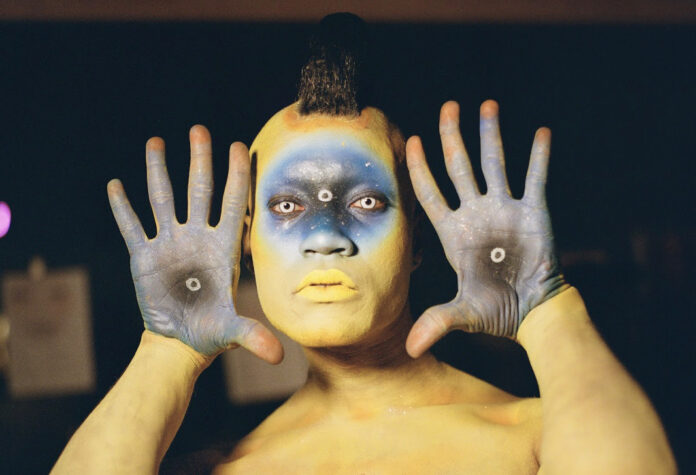Frost-soft pastels printed on rich maple wood panels, muted color stories of explosive personalities, nightlife performers on a sunlit beach, striking poses born from breaking down the contemporary urge to constantly strike poses… Photographer Luke Kraman‘s indelibly atmospheric photos of dominatrixes, drag queens, trans legends, DJs, artists, and club personalities spark from clashing contrasts that give rise to a unique zone of expression.
“These interactions and resulting portraits are times I’ve felt balanced in the contradictions of my life,” he says of capturing the subjects featured in “Final Selects One,” his debut solo photography show, opening at MRKT Gallery, SF, on November 9. “Chaotic/tidy. Vulnerable/composed. Warm/cold. Present/dreaming. Subtle/contrast. These liminal spaces are inherently queer. Neither this nor that but both, all, any and constantly questioning.”
Those words are taken from the artist statement that reads more like a daily journal—what he’s been reading (Patti Smith, Brontez Purnell), where he’s been traveling (splitting his time between SF, NYC and LA)—than a fusty pick-me academic analysis, mining another fertile dichotomy: a care-free and dryly funny approach to a meticulous process of artistic discovery and production. The fabulous figures portrayed in “Final Selects One” are disarmingly eccentric and often ethereally gorgeous, but at the same time they simply reflect Kraman’s everyday encounters and personal circle of gals.
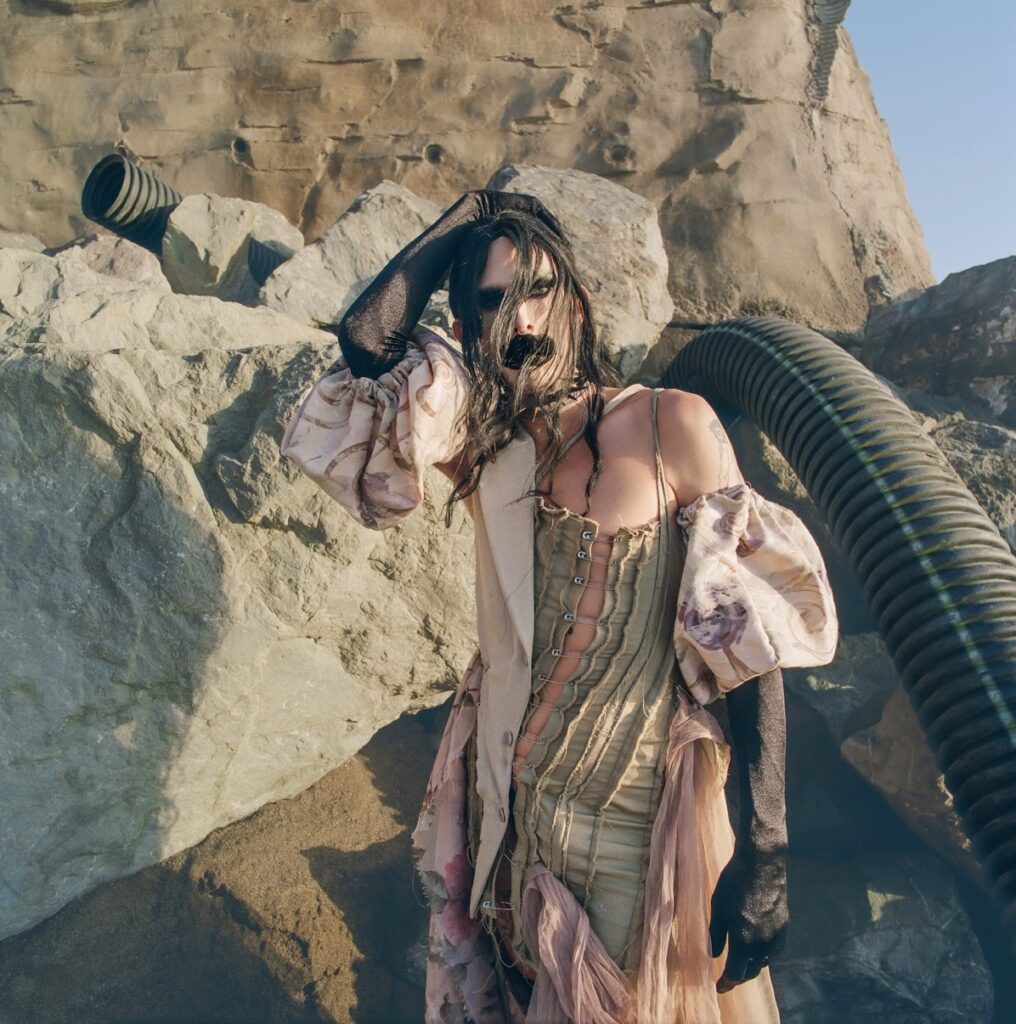
“They’re artists, strangers turned friends, and whoever I organically stumble into a shoot with,” he writes. “Each was asked to pause their own push and pull to just be there. To me, that is beauty–what we see when you are not thinking about being viewed. That calmness or acceptance is if anything at least real, and I think it’s important we hold onto that. It’s some fucked up times out there.”
For Kraman, the road to “Final Selects One” was direct, in a roundabout way. “I’ve been shooting pictures since I was eight,” he says. “It started with disposable cameras. I grew up in Park Slope, Brooklyn, by Prospect Park, and I did a report on the park for school and took photos. That’s my first memory of taking photos.
“But my first memory of being actually entranced by photography was when my grandparents had this little haunted country house in Cornwall, Connecticut, which I later learned may have been rumored to be the inspiration for Blair Witch Project, because there are abandoned colonial ruins in the woods there. It’s super creepy. We grew up going there on the weekends, as city kids, to get into nature. And there was a closet—ironically—I remember going into, and finding boxes and boxes of slide film that my grandmother took on a Rolleiflex. I used to just stare at them for hours; that’s where my obsession started.”
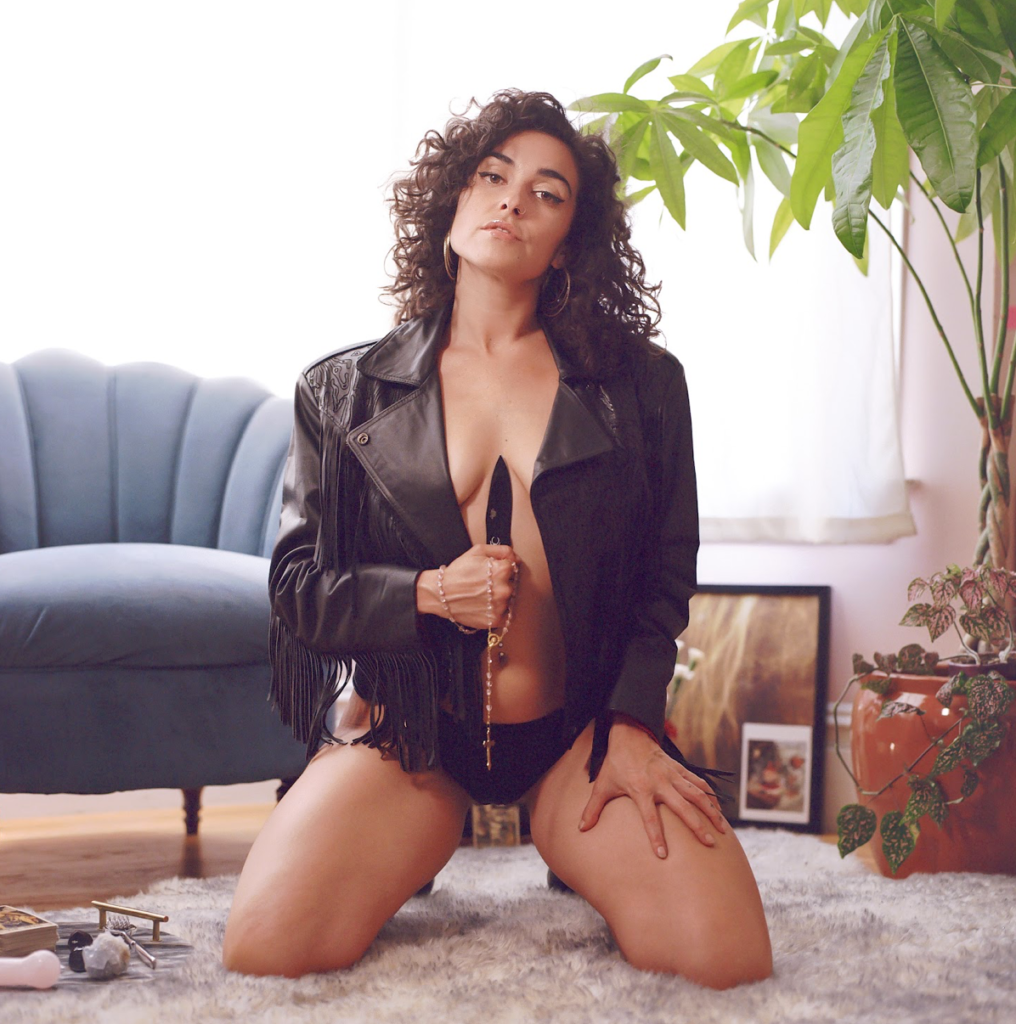
A “darkroom nerd” in high school who left disposables behind for 35-millimeter, Kraman was such a known photography buff that his principal had him teaching younger students while still in his senior year—in exchange for the chance for Kraman to add more photography classes to his schedule. In college, he switched to filmmaking and multimedia art, but a moment of retro inspiration drew him back in. “Near the end of college, someone photographed me on a classic Hasselblad and I became obsessed with this camera. For five years I saved up, and got one off a man from Norway on EBay. I still shoot with the same camera to this day.
“For a long time afterward I was landscape-focused. I was secretly very interested in people, I was surrounded by very interesting people. But I myself never like to be photographed, so I never was able to make that leap. Then COVID hit and something switched. It was that irony again, that contrast—right when I couldn’t be around people, I suddenly had the urge to document them.”
Kraman’s portraits of the nightlife and fashion demimonde inherit a long legacy of documenting such lively folk, but unlike firecracker sensationalism (Warhol, Arbus) or ephemeral poignancy (Goldin, Tillmans), Kraman differs in painstaking negotiations with his subjects to “deprogram” them about how they should feel when a camera lens is aimed at their direction. “Something unnatural, or maybe just different, happens to body language when a camera is present. I have long conversations with the person I’m photographing about their own personal experience with that, their history often gets really deep.
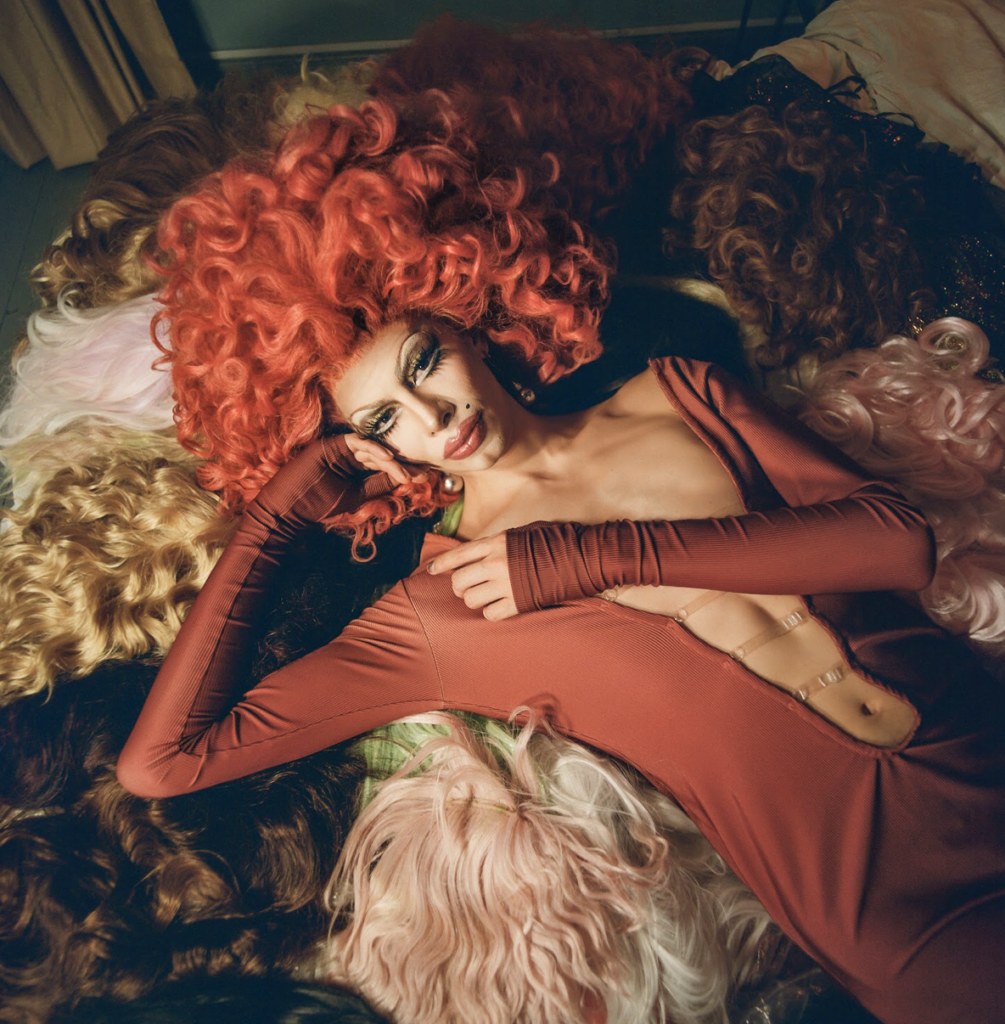
“Once we talk, I see this amazing transformation—not necessarily of comfort with the camera, or disregard for it, but a new relationship that allows them their own space in the process to express themselves in an authentic way. Like, ‘We are here together and this is who I am.’ I’ve worked with people with body dysmorphia issues or people figuring out their gender identity actively during the time of our shoot. It creates space for them to let go of the pressures surrounding expectations, and accept what’s there already”
The discovery of this conversational method came of disaster. “My first portrait subject was my friend Viv, who is getting her master’s in art therapy—she’s also a domme and an astrologer. She’s a very soulful hippie who used to roll us joints with lavender in them that corresponded to the moon phase we were currently in. She said, I need some domme photos and I thought, OK, let’s do the softer side of domme photography.
“Well, I got the film back and it was all fucked up. My camera had malfunctioned. We had to do the whole thing again. It was a valuable lesson because when we did shoot again, we had this comfort level already. I thought, I’m going to put on some subby kink gear and shoot her from below. That got her into her mindset, and showed me like the importance of having a genuine rapport with someone.”
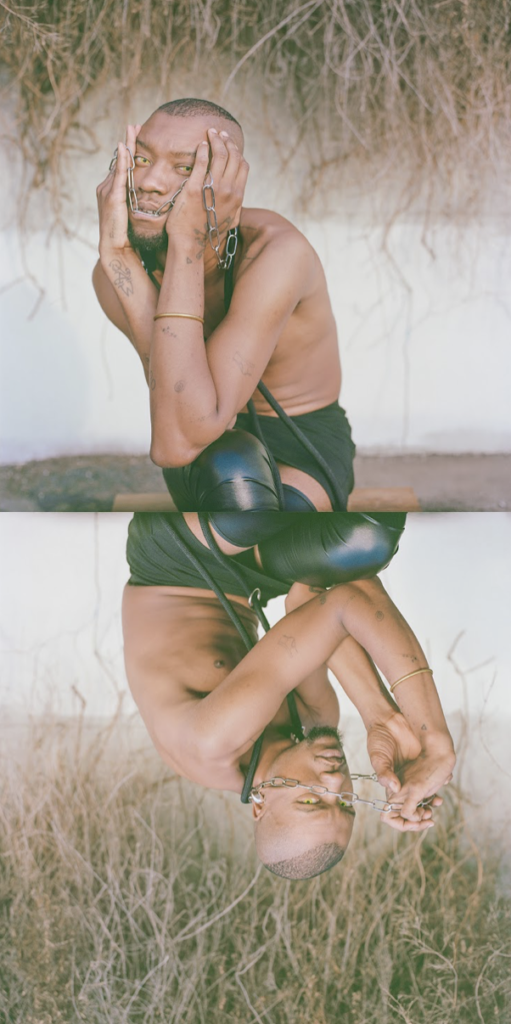
The soft, pastel tint of the portraits in “Final Selects One”—from improvised interior shoots like non-binary drag artist Posse splayed on a bed of wigs in her Mexico City apartment or action shots from the Ever Afters queer techno campout and an Andrew James fashion show in Los Angeles—is another important factor for Kraman, a slightly vintage-like aura of the pictures echoing his analogue equipment and laidback conversational process, opening the portal to liminal queer space by femming things up a bit.
“You can do gritty things with the Hasselblad,” he says, “but I like things soft. I shoot on Kodak Portra film, which has a softer grain, and it treats skin tones really nicely. When I shoot, I overexpose a little, and in post I bring up the darkness a little bit and soften the colors. It provides a through-line for all my work.
“I also shoot in medium format because it’s square, and satisfies my OCD Virgo-ness. I’m often working on such an emotional level with my subjects, and the square and the softness bring a kind of calmness. The format offers limitations that help my overactive brain process all these feelings in an artistic way—I thrive on the limits of the medium to pour all this energy and transgression into. It’s that contrast, again.”
LUKE KRAMAN: FINAL SELECTS ONE opening reception November 9, 7pm-10pm, MRKT Gallery, SF. More info here.

